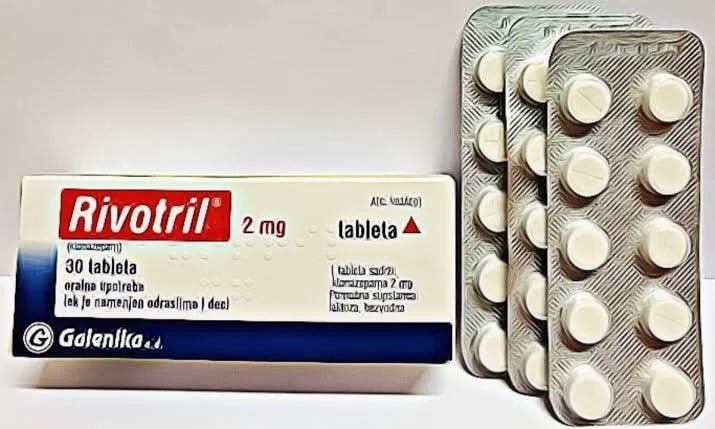Rivotril 2mg (clonazepam) is used to treat seizures, anxiety, and panic disorders. It calms brain activity and helps manage symptoms. Over time, the body gets used to it. If stopped suddenly, withdrawal symptoms can occur. Understanding the process helps reduce risks and makes recovery smoother.
Why Does Withdrawal Happen?
Clonazepam affects how the brain reacts to stress and nerve activity. Long-term use can lead to dependence. The body adjusts to the presence of the medicine. When it is removed, the brain needs time to readjust.
This change causes withdrawal symptoms. They can range from mild to severe, depending on the person and how long they used the drug.
Common Withdrawal Symptoms
Most people feel symptoms within a few days of their last dose. Some last a week, others may continue for longer. Here are the most reported symptoms:
- Nervousness or anxiety
- Trouble sleeping
- Fast heart rate
- Sweating or chills
- Muscle pain or tightness
- Nausea or vomiting
- Mood changes
- Dizziness or headaches
- Seizures (in rare cases)
Each person reacts differently. The symptoms can feel overwhelming but are usually temporary.
Rebound Symptoms
Sometimes, the problems Rivotril was treating come back stronger. This is called rebound. You might feel more anxious or panicked than before. Seizures could also return in people using Rivotril for epilepsy.
This stage can be hard but usually fades with time and proper support.
Stopping Suddenly Is Risky
Stopping Rivotril all at once can be harmful. The brain needs time to adapt. Without a slow reduction, symptoms may become worse. A gradual plan is safer and more comfortable.
Safe Ways to Stop Rivotril 2mg
1. Talk to Your Doctor
A doctor will assess your health and history. They can create a safe tapering plan and monitor your progress.
2. Taper Slowly
A tapering plan means reducing your dose step by step. This allows your brain to adjust over time. A typical plan may reduce the dose by 10–25% every 1–2 weeks.
3. Monitor Your Health
Track your sleep, mood, appetite, and energy. Write down any new symptoms. Share this with your doctor. They can adjust your tapering schedule if needed.
4. Get Support
Withdrawal can feel lonely. Ask friends or family to check in on you. Joining a support group can also help. Talking to others who understand makes the journey easier.
Managing Symptoms at Home
You can take small steps to ease withdrawal symptoms:
- Drink enough water
- Eat balanced meals
- Get light exercise like walking
- Try deep breathing to calm anxiety
- Use sleep routines to improve rest
- Avoid alcohol and caffeine
- Try music, reading, or gentle hobbies to relax
These habits can improve mood and reduce stress.
When to Seek Help
Sometimes, symptoms can be too strong to handle alone. If you have seizures, chest pain, or thoughts of self-harm, seek emergency care. These signs mean your body needs more support.
Preventing Future Issues
To avoid dependence again, follow your doctor’s guidance when using any medication. Do not change your dose without asking first. If you feel you need more to get the same result, speak to a medical professional.
For those who need the medicine under safe conditions, you can buy Rivotril 2mg online through licensed pharmacies with valid prescriptions.
Final Thoughts
Withdrawal from Rivotril 2mg can be tough, but it's possible with the right plan. Gradual tapering, medical advice, and support from others can make a big difference. You don’t have to go through it alone.





Comments